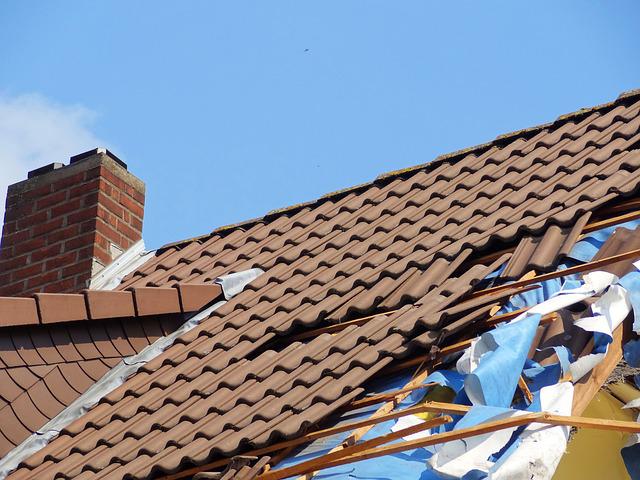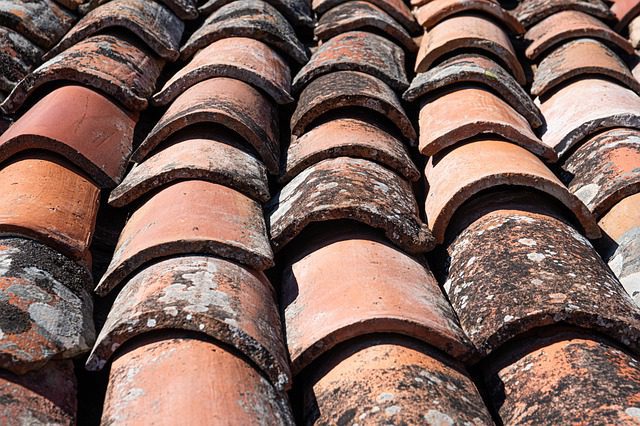

In addition to the material, your roof's underlayment or felt layer protects the clay or concrete from water damage, making it exceptionally long-lasting. While the tiles may survive a few decades, the underlayment replacement will need to be done every 10 to 20 years.
When it comes to roof replacement, weather and the quality of the roofing underlayment, as well as how well you maintain the roof, will all play a role in how long it takes. This is important to understand to answer the question 'How long does a tile roof last in Arizona?'
The typical lifespan of a tile roof, whether it is made of clay or concrete, is 40 to 50 years. If the circumstances are excellent, the tiles may endure nearly twice as long, but they will need to be repaired at some point.
Dry, severe heat may last for three or more months in the summer in Arizona and other areas of the Southwest, and the strain it puts on homes is exacerbated by the inevitable monsoon season and occasional frost in the winter.
It makes sense to construct something that will survive for many generations, which is why so many Arizonans select tile roofs to protect their homes, ranches, and other structures from the harsh Arizonan weather.
Tile is a popular choice for roofs in dry climates, but it also has the added benefit of lasting longer than any other roofing material. In this area, the longevity of a roof is mostly dependent on the material used to build it. In a nutshell, this means:

Arizonans love their tile roofs because they are long-lasting, attractive, and easy to maintain. For what reasons do a large number of house owners prefer to install or repair tile roofs?
In hot climates like Arizona's, both clay and cement tile do well. Also, if you live near the ocean or sea, they're a great choice.
Because they are formed in fire, ceramic and stone tiles are more durable. As a matter of fact, asphalt roofs are more vulnerable to the sun than they are to cold weather, ice, or rain.
Roofs covered with ceramic tiles are common throughout the Southwest and in coastal California and Florida because of their ability to survive such harsh temperatures.
Many may have tried the newest aluminum tumblers and glasses that keep ice cold all day. They do this by providing an air gap between the hot (outside) and cold (ice, inside) parts of the container. Roof tiles operate in much the same fashion, providing an air gap between the harsh UV rays and the pliable asphalt membrane. This air gap, with constantly circulating air, ensures that the heat dissipates quickly and prolongs the life of the roofing system.
Tile roofs, in addition to being the most heat-resistant roofing material, are also the most energy-efficient, making them an excellent choice for your home. Tiles are naturally resistant to heat, and they reflect light rather than absorb it, making them ideal for interior design.
Secondly, tiles are installed one at a time rather than in strips or sheets, allowing for natural ventilation. In this way, tiles help your HVAC system by preventing heat from moving from the roof material to the roof deck, saving you a lot of money on your energy costs.
Allowing some air movement without allowing water or anything else to get into the roof is another benefit of tiles. During Arizona's monsoon season, you may design a roof that insulates while yet enabling the home to breathe by allowing air to circulate.
Additionally, tile's fire resistance is a major selling point for homeowners, especially in arid areas where fires are becoming increasingly prevalent and more deadly.

While tile is easy to maintain, you still need to keep a close eye on it in order to ensure its long-term viability. Broken tiles and inadvertent damage are two problems that Arizona's roofs have to deal with. To keep your entire roof safe, it's imperative that you spot cracked or broken tiles right away.
When exposed to the elements, tiles can become fragile and prone to cracking. Damaged tiles reveal a felt underlayment beneath them. A few damaged tiles might ruin the underlayment's longevity and lead to leaks in the event of extreme weather conditions.
Inspecting your tile roof from the top is dangerous, so avoid doing so. Due to its fragility, you may inadvertently inflict more harm. In the same vein, only let service or repair professionals on your roof if they have experience working on tile roofs and can do it safely.
Aerial installers, window cleaners, and chimney sweeps shouldn't be allowed on your roof unless they have access platforms, roof ladders, and crawling boards to get there. They can break your tiles if they don't have the proper tools.
The lifespan of an Arizona roof might range from ten to fifty years, depending on the roof systems you have put on your home or structure. Roof tiles may last up to 50 years, shingles can last 30 years, and foam roofs can last 15 to 25 years. Here, we'll go through all the different roof systems and their lifespans in greater detail.
In the United States, Arizona ranks as one of the most sweltering states during the summer months. The lifespan of your home's roof is greatly impacted by the rate at which heat rises through it.
With proper care, high-quality roofing materials may last as long as five decades, but the harsh weather conditions can shorten their lifespan and harm your property.
How long do shingle roofs last?
One of the affordable roofing solutions on the market today is asphalt shingle roofing. Despite this, it has a lengthy lifespan and a high level of durability. In Phoenix and the surrounding area, shingle roofs can last up to 30 years on average. In addition to its thickness and cost-effectiveness, it comes with a wide range of options.
It is well-known that the density of shingles, whether they are dimensional or architectural, is remarkable. The thicker the roof, the better it is for warmer climates. It is possible for them to remain on the roof for between 10 and 30 years.
Shingles are also noted for their affordability. You won't need to remove the old shingles before installing new ones. Moreover, if you have a roof that can survive for decades, that's reasonable in terms of price. If you're looking for something that's a little more expensive, architectural shingles provide a wide variety of sizes and forms.
How long do foam roofs last?
Check the material, the installation technique, and the coating to see how long Arizona Phoenix's foam roofing will survive. Foam roofs need to be coated during installation and recoated at least once every five years after that.
In most cases, foam roofs last between 15 and 25 years, but if proper installation and recoating procedures are followed, they will last longer than that.
It's time to replace the old foam on the roof as soon as you see any cracks or holes. A foam roof would be suitable for Arizona as long as all safety measures and maintenance procedures are followed; therefore, if you ask me, I'll answer yes! It's not easy to replace a roof every twenty-five years. Page Break
How long do rubber roofs last?
The type of material used in a roof's construction determines how long it will endure in the Arizona sun. If you're thinking about EPDM as a roofing material, you might be surprised to learn that it can last for 50+ years before needing to be replaced.
The UV resistance of this rubber-like synthetic roofing material is well-known. It will not break down or crack, no matter how intense the heat or how extreme the circumstances are. It has a 300 percent increase in elasticity.
EPDM roofs have a normal lifespan of 50 years, regardless of whether they are used for industrial or home purposes. Because of its excellent tolerance to water, rain, wind, and UV radiation, it can live for many more years.
How long do metal roofs last?
Because of their excellent impact resistance, metal roofs are popular in the United States' hottest regions. In addition, they are excellent heat reflectors.
Metal roofs are the finest choice for Phoenix because of their excellent resistance to wind, rain, and UV radiation, as well as their well-known monsoon season and sandstorm.
Additionally, a well-fitted and maintained conventional metal roof may endure more than 60 years, regardless of where it is put.
Arizona metal roofs come in a variety of styles, from painted and corrugated to standing seam and stone-coated. They can last up to 50 years.
How long do concrete tile roofs last?
Slab concrete tile roofs are a wonderful choice for hot-weather areas like Blythe, Phoenix, and Tucson. Concrete roofs have a 50-year lifespan.
A longer period elapses before the heat from the sun has an effect on this type of roof, which saves money on energy costs.

Your house has a roof above it. A leaky roof has the potential to devastate your entire structure, perhaps resulting in its collapse. Whether you reside in Phoenix, Arizona, or Fairbanks, Alaska, you must be exceedingly proactive in order to ensure that your roof lasts longer than planned.
In order to do it, consider implementing the following strategies:
Ensure proper installation: do not compromise underlayment (where necessary), recoating, and a lot more.
A new tile roof may cost anywhere from $7,500 to $20,500 and is both beautiful and long-lasting. The cost of ceramic tiles may vary depending on the choices you pick, such as color, glazing, or bespoke forms.
The lifespan of an Arizona roof might range from ten to fifty years, depending on the roof systems you have put on your home or structure. Roof tiles may last up to 50 years, shingles can last 30 years, and foam roofs can last 15 to 25 years.
Tile roofs may survive for more than 50 years if installed correctly. Concrete or clay can be used to build this type of roof, with clay being a more durable alternative. However, storms, hail, and poor care can reduce the life expectancy of a tile roof by several years.
For flat roofs in Arizona, polyurethane foam roofs are the most common and extensively utilized roofing technologies. Foam roofing has several advantages: The framework of a building may expand and compress without damaging polyurethane foam. It's light, strong, and completely flawless.
Phoenix's weather may be unpredictable, as anybody who has lived here for any length of time will attest to. When a tile is laid correctly, it can resist anything from monsoon rains to the sweltering summer heat. Wind, heat, decay, and insects have little effect on the tile.
When it comes to exterior warning signs, the most obvious is the presence of damaged roof tiles. These tiles will need to be replaced if they are damaged in any of the following ways: they are cracked, decaying, buckling, ripped or otherwise damaged, worn or curled, or even loose.
Your roof will degrade with age due to exposure to the sun, wind, rain, and snow. Your roof will most likely need replacement if it's more than 20 years old.
